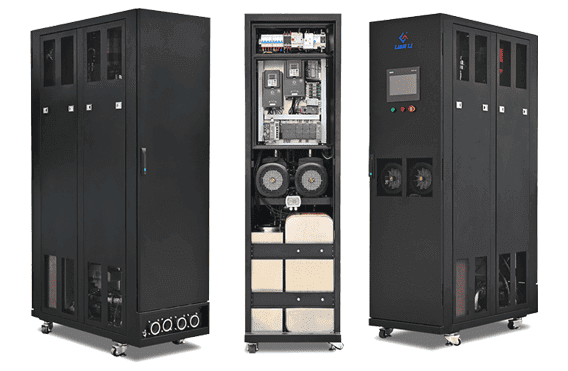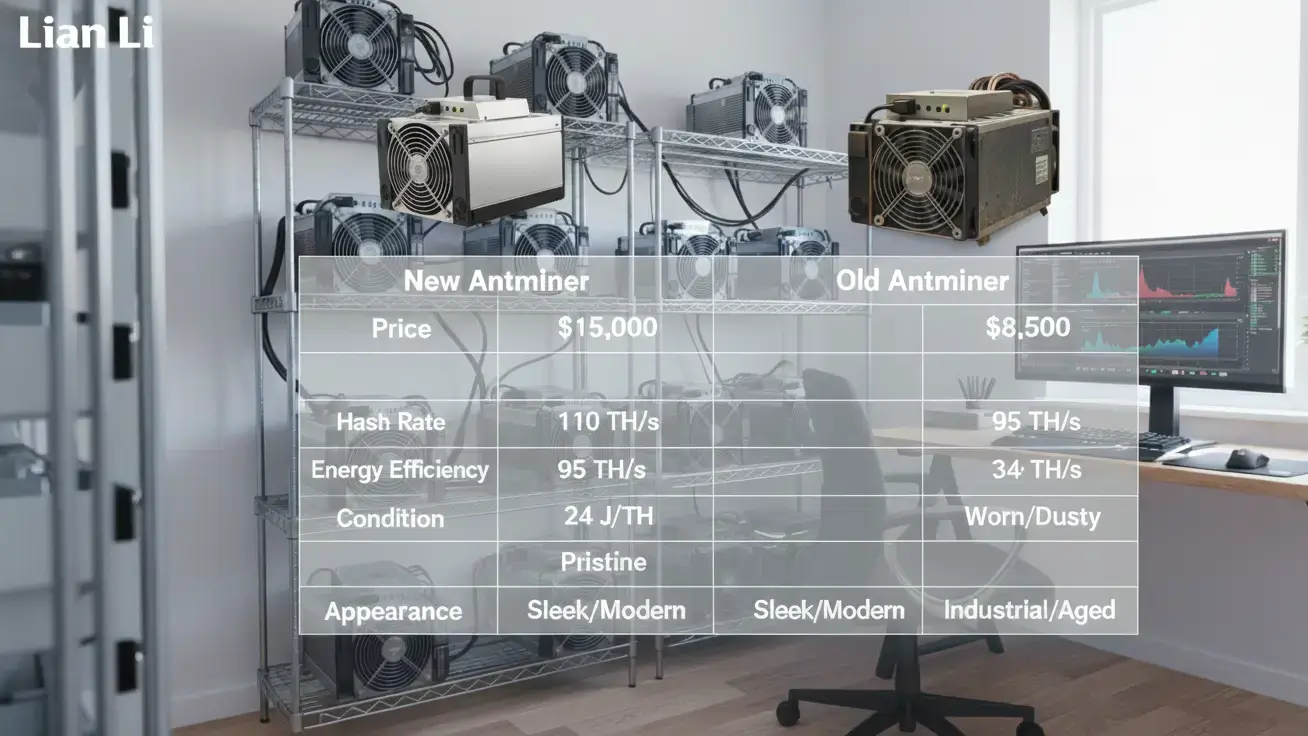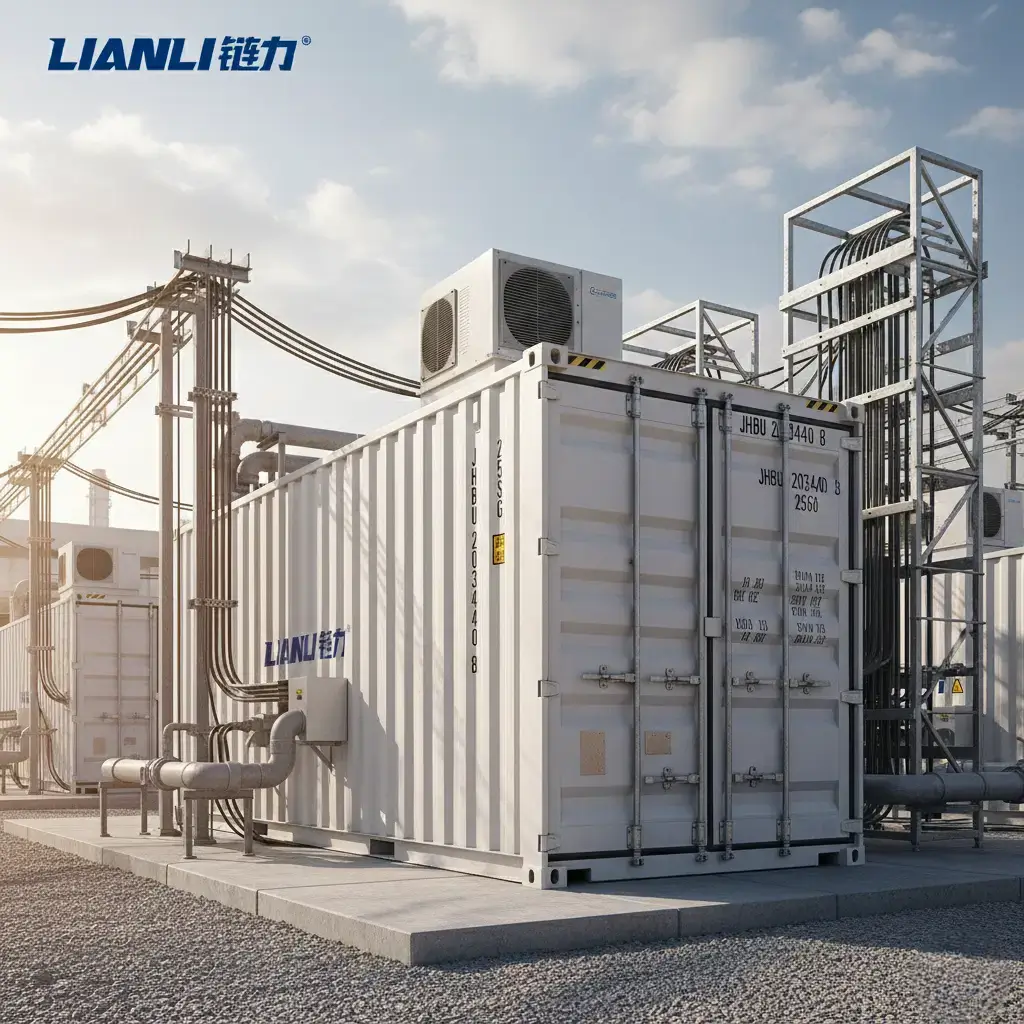Cryptocurrency mining farms generate immense heat, making efficient cooling crucial for uptime and profitability. Industrial-scale miners typically use one of three approaches: air cooling, liquid cooling, or immersion cooling. Each method has trade-offs in effectiveness, energy use, scalability, and complexity. This guide surveys these technologies, compares them across key factors, and suggests leading commercial solutions. We also offer practical setup and maintenance tips, plus links to related resources to boost SEO and reader engagement.
Air Cooling Solutions
Air cooling is the most common method. It uses high-capacity fans, HVAC units, and ventilation to blow air over ASIC and GPU rigs, expelling heat outdoors. In practice, large mining facilities often employ computer room air conditioners. Fresh-air evaporative coolers are also used. EcoCooling’s modular systems use outside ambient air and, if needed, evaporative pads to cool hardware with minimal power. In cold climates, simply mixing cool outside air with recirculated warm air can be enough. Engineers design airflow in either negative-pressure or positive-pressure configurations to optimize cooling and minimize dust intake.
Air cooling is relatively simple and low-cost upfront. It leverages standard ventilation fans and chillers, and can be deployed quickly. However, it has limitations. Air’s poor heat capacity means fan energy and ducting costs can be high. Ventilation can account for ~40% of a mining facility’s energy consumption. In fact, one analysis notes cooling can represent ~40% of total energy costs in crypto farms. Yet with proper design, airflow optimizations can improve the power usage effectiveness (PUE) significantly. For example, engineered ventilation can lower PUE from ~2.0 to ~1.6, cutting cooling costs about 25%.
Advantages of air cooling:
Mature technology with many vendors.
Lower initial CAPEX.
Easier to scale by adding fans, vents or AC units.
No risk of fluid leaks or liquid handling permits.
Drawbacks of air cooling:
Less efficient at high densities; heat removal plateaus as rack power rises.
Dependent on ambient conditions.
High noise levels, vibration, and airborne dust can reduce equipment lifespan.
Large footprint; low rack densities require more floor space.
Top air-cooling solutions and providers: Facilities often use direct fresh-air coolers and CRAC units. EcoCooling’s ECV CloudCooler draws cold outside air into the data hall. Standard data center HVAC from Liebert, Trane, or Carrier is also common. Some specialized mining HVAC vendors custom-design ventilation for crypto farms. Industrial box fans and high-temperature exhaust fans are often used to supplement cooling.
Setup & maintenance tips:
Airflow design: Use cold and hot aisle separation if possible. Consider an elevated floor or ceiling plenums for intake and exhaust. Maintain positive pressure with filters on intakes in dusty environments.
Intakes and filters: Install air filters and louvers to block insects, dust, and moisture. Clean or replace filters often to prevent clogging.
Fan and AC upkeep: Regularly inspect and service fans, motors, belts, and coils. Ensure redundant fans or chillers are on standby to avoid downtime. Monitor facility temperature and humidity closely.
Monitor costs: Track airflow and PUE. Optimize fan speeds with VFD controllers so fans only run as needed, reducing wasted energy.
Liquid Cooling Solutions
Liquid cooling also called water cooling or hydro-cooling, uses water or another liquid coolant to absorb and remove heat more effectively than air. Water loops circulate coolant through blocks or piping attached directly to hot components such as ASIC chips. A direct water-cooled system might run coolant through cold plates on CPUs or GPUs; an indirect system uses a secondary coolant in a closed loop that then cools a separate water loop. Typically, heated water is pumped to external heat exchangers, radiators, chillers, or cooling towers to reject the heat.
Liquid cooling can dramatically improve efficiency. Water conducts heat about 25 times better than air. As one engineering firm notes, the fluid is much more effective at conducting heat than air, enabling up to ~50% energy savings in some designs. In practice, crypto miners using water cooling run hotter chips without throttling. Such systems often cut noise because fans can be slower, boost component lifespan by preventing dust accumulation on heatsinks, and allow higher overclocks. For example, one source reports liquid-cooled miners ran at 25–55% higher hash rate than comparable air-cooled rigs, due to cooler operation.
Advantages of liquid cooling:
Higher heat capacity: Removes more heat per litre of coolant than air can per cubic meter. Radiators and chillers run more quietly than many fans.
Energy efficiency: By eliminating many fans, liquid-cooled setups can reduce facility power draw.
Modularity and density: Rack-mounted water-cooled miners can be denser and save floor space versus sprawling fan rigs.
Heat reuse: The warmed coolant can sometimes be used for waste heat capture for heating buildings or pools.
Drawbacks of liquid cooling:
System complexity: Requires pumps, piping, leak detectors, coolant treatment systems and possibly a separate chiller.
Leak risk: Water exposure can destroy electronics, so high-reliability fittings and monitoring are essential.
Maintenance: Coolant must be treated with anti-corrosive additives, filtered, and periodically replaced to avoid algae or bacteria. Pumps and valves require servicing.
Cost: Initial CAPEX is higher than pure air cooling, though often lower than large immersion setups.
Top liquid-cooling solutions and providers: Specialized coolant distribution units are at the heart of industrial liquid cooling. DCX Liquid Cooling Systems offers HYDRO cooling kits and CDUs for ASIC rigs. Asetek and CoolIT Systems provide direct-to-chip water blocks and rack-mounted loops that can be adapted to miners. Commercial workstation liquid-coolers can be jury-rigged at small scale, but large farms rely on industrial solutions.
Setup & maintenance tips:
Leak prevention: Use braided tubing, quick-disconnects, and drip pans. Employ humidity and leak sensors near all connections.
Water chemistry: Fill loops with deionized water plus corrosion inhibitors. Check pH and conductivity monthly.
Pump and CDU: Size pumps for flow and head pressure. Install redundancy with dual pumps for megawatt farms. Drain, flush, and refill loops yearly.
Heat rejection: Connect radiators or chilled water loops capable of handling your load. In cooler climates, free-cooling using dry coolers can handle heat with minimal electricity.
Vibration and support: Secure all hardware so that pumps and flow do not dislodge components.
Immersion Cooling Solutions
Immersion cooling submerges the entire mining hardware in a non-conductive dielectric fluid. Heat is absorbed by the fluid and removed via a heat exchanger. There are two main types:
Single-phase immersion: Components sit in dielectric oil. The fluid is pumped through external radiators or heat exchangers to dissipate heat. No boiling occurs; heat is moved by liquid flow.
Two-phase immersion: The fluid has a low boiling point. As chips heat, the fluid boils into vapor, carrying heat away. Vapors condense on cold coils and the liquid returns to the tank.
Advantages of immersion cooling:
Extreme efficiency: Fluids have heat capacities far above air. For instance, Bitfury reports handling 40 megawatts of computing power in one installation using immersion. Immersion often achieves orders of magnitude better cooling. One provider claims their passive two-phase system cuts cooling energy by more than 90% and is up to 4000 times more effective than air.
Higher density and performance: Without fans, rigs run at full hash rates continuously. Systems can be two to three times denser per rack than air setups. Immersion also extends hardware life by several years in some estimates because there are no hot spots and no dust.
Eliminates dust and noise: A tank full of fluid means zero airborne dust on components, reducing cleaning. Fans are removed entirely, making operation virtually silent.
Energy reuse: Hot fluid can easily be piped to heat buildings or steam generators. Waste heat capture can recover a significant portion of energy for reuse.
Drawbacks of immersion cooling:
High CAPEX and complexity: Requires custom tanks and fluid handling infrastructure plus safety measures. Startup costs are high.
Maintenance complexity: Fluids must be high-purity dielectric grades. They can degrade or become contaminated over time. Tanks require leak-tight seals and frequent checks. Cleaning electronics after removing from fluid is messy.
Vendor lock-in: Many immersion solutions are proprietary. Mixing and matching hardware is harder than for air or water systems.
Weight and space: Tanks filled with fluid are very heavy. Facilities need reinforced floors and spill containment.
Top immersion solutions and providers: Immersion cooling is being adopted by crypto farms and HPC centers alike. Notable companies include Green Revolution Cooling, whose ICEraQ and ICEtank systems use single-phase fluid and standard hardware. DCX Liquid Cooling Systems offers modular immersion containers and rack enclosures. Submer makes the SmartPod immersion tank for data centers. LiquidStack commercialized two-phase immersion with the DataTank and reports substantial cooling-power reductions in trials. Bitfury and Allied Control provide custom two-phase tanks using high-grade fluids and report higher computing per rack with significant space savings. Other players include CoolIT, Vertiv, and Schneider Electric.
Setup & maintenance tips:
Fluid selection: Use high-grade dielectric fluids and ensure compatibility with equipment and environment.
Tank design: Provide overflow and drain systems plus spill containment. Include clearance and ladders for servicing immersed rigs.
Monitoring: Fit temperature sensors and fluid level gauges. Regularly check for leaks or fluid degradation.
Fluid care: Change or filter fluid periodically every few years or sooner if contamination occurs. De-gassing or filtration systems can extend fluid life.
Equipment extraction: Plan procedures for removing miners from fluid for repairs, and prepare drip pans and cleaning solvents.
Cooling Technology Comparison
The table below summarizes how air, liquid, and immersion cooling stack up:
Effectiveness: Air cooling is least efficient, limited by ambient temperature. Liquid cooling can remove more heat per unit, and immersion far exceeds both. In practice, immersion solutions regularly achieve 25–55% higher sustained hash rate and much quieter operation.
Energy efficiency: Air cooling costs most in power. Liquid and immersion cut facility HVAC and PUE dramatically. One analysis cites immersion saves 50–90% of energy used by fans and AC. As a result, long-term OPEX often favors liquid or immersion despite higher CAPEX.
Scalability: Air-cooled farms can be expanded with more fans and rooms easily, but require huge volumes of air and floor space. Liquid-cooled farms scale via more racks with shared coolant loops; they need careful hydraulic design but can pack more power per square meter. Immersion allows the highest densities, but each tank is a fixed size, so scaling means adding more tanks or prefabricated containers.
Complexity: Air systems are simplest to install with familiar HVAC techniques. Liquid loops add plumbing and pumps. Immersion requires specialized build-out and training and is the most complex. All require careful monitoring and maintenance, but immersion adds chemical handling and safety concerns.
In terms of cost, a rough ordering is: Air < Liquid < Immersion on initial cost, though immersion often pays off later. For example, engineered air ventilation might cost about $35k–$40k per MW, whereas immersion solutions can cost several times that. However, studies show that with immersion’s efficiency, the total cost of mining including electricity and maintenance can drop significantly.
Recommended Commercial Solutions
Air Cooling: Alongside general HVAC providers such as Schneider Electric CRAC units and Trane chillers, some firms specialize in crypto-cooling. EcoCooling’s CloudCooler is a plug-and-play fresh-air system widely used in mining farms. Industrial ventilation suppliers offer high-temp-rated fans specifically for crypto ventilation. Facilities may also use containerized air-cooled mining containers which integrate fans, filters, and climate control.
Liquid Cooling: DCX Liquid Cooling Systems’ Hydro CDU provides integrated water-cooling racks for popular ASICs. Companies like CoolIT Systems and Asetek sell direct-to-chip liquid blocks that can cool multiple boards in data centers. For bespoke solutions, some farms use industrial chillers with cooling loops and heat exchangers tailored to the mine.
Immersion Cooling: Leading immersion platforms include GRC’s ICEraQ and ICEtank, which come as turnkey immersion racks. LiquidStack and Submer are top-rated in the two-phase immersion niche. Bitfury and Allied Control offer custom two-phase tanks using high-grade fluids. For smaller setups, companies like Iceotope and other HPC cooling vendors can supply chassis-level liquid or immersion gear.
Setup and Maintenance Tips (by System)
Air Cooling Tips: Optimize layout for straight airflow paths. Seal hot aisles to prevent recirculation. Clean all dust filters and heatsinks regularly every 1–3 months in dusty regions. Use variable-speed fans to match cooling demand. Check that exhaust points are unobstructed. Monitor fan RPMs and motor temperatures to avoid catastrophic failures.
Liquid Cooling Tips: Pressure-test loops before powering miners. Install coarse and fine strainers to catch particles. Drain and replace coolant yearly or if pH drifts. Keep an eye on pump bearings and replace them on schedule. In cold environments, use glycol in pipes to prevent freezing. Label valves and have a schematic of the loop for troubleshooting. Consider a ducted cabinet around racks to manage spill containment.
Immersion Cooling Tips: Before fill-up, bake-out miners to remove moisture. Top off fluid to maintain level and evacuate any trapped air because bubble spaces reduce cooling. Install sensors for dielectric breakdown to catch stray ions or moisture. Change or top-up fluid every two to three years or as recommended by the fluid supplier. Filter the fluid periodically if it accumulates debris. Schedule periodic maintenance to pull miners, inspect PCBs for corrosion, and clean if needed. Follow all safety protocols for handling immersion fluids.
By carefully designing cooling — whether conventional air, advanced water systems, or cutting-edge immersion — an industrial crypto mine can run equipment at peak capacity while minimizing power waste and downtime. The right choice depends on site climate, density goals, and budget. With trends toward higher hash rates and sustainability, many large operations are moving from basic air cooling toward hybrid liquid or full immersion strategies.





